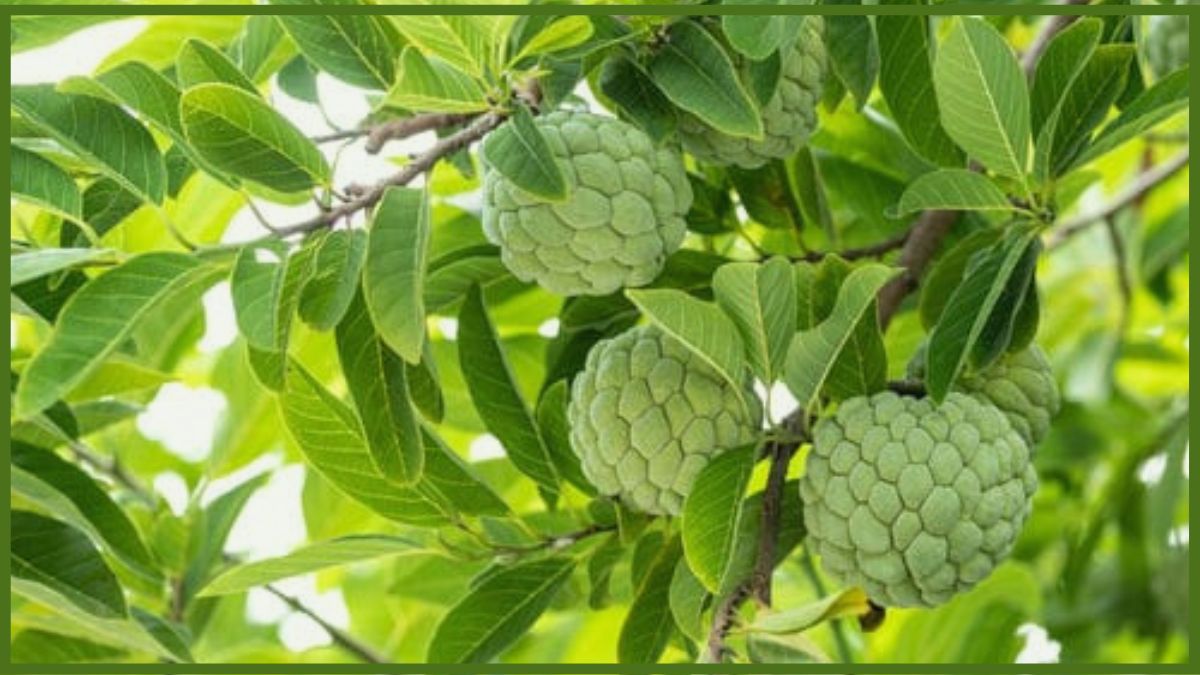Welcome to my blog! Here, I will be sharing my tips and tricks on how to grow sugar apple trees. Sugar apples are a delicious and nutritious fruit, and I believe that everyone should have the opportunity to enjoy them.
I have been growing sugar apple trees for many years, and I have learned a lot along the way. I hope that my readers will find my blog helpful and informative. Thanks for stopping by!
Sugar apple is a fruit tree of the family Annonaceae and genus Annona. The scientific name of this fruit tree is Annona squamosa. The other popular names of this fruit are custard apple, sweetsop, atis and sitaphal. This fruit tree is native to tropical America and West Indies. This fruit tree can grow up to 20 feet in height. The twigs of this tree are orange-brown to reddish-brown in color. These twigs are hairless and smooth in texture.
What is a sugar apple?
A sugar apple is a fruit that is native to tropical climates. The fruit is round or oval in shape and has a scaly, green exterior. The interior flesh of the fruit is white or pale yellow and is dotted with black seeds. Sugar apples are also known as sweet apples, custard apples, orannge balls, and cherimoya.
The sugar apple tree grows to be about 15-20 feet tall and has dark green, glossy leaves. The flowers of the tree are white with purple streaks and are about 2 inches wide. The fruit typically ripens from June to August.
Sugar apples are grown in tropical regions around the world including South America, Asia, and Africa. In the United States, sugar apples can be found in Florida, Hawaii, and California.
Where do sugar apples come from?
Native to tropical South and Central America, sugar apples are now grown throughout the tropics. They are especially common in India, Sri Lanka, the Philippines, and Indonesia. In the United States, they are grown in Hawaii and Florida.
How to plant a sugar apple tree
First, find a sunny spot in your yard that has well-drained soil. If you live in an area with clay soil, you may need to amend it before planting. Sugar apple trees do not like wet feet, so make sure your tree will have good drainage.
Next, dig a hole that is twice as wide as the tree’s root ball but no deeper. Place the tree in the hole and backfill with your amended soil. Water well to settle the roots.
Sugar apples are tropical trees and do best in warm weather. They will need regular watering, especially when they are young and during periods of drought. Be sure to mulch around your tree to help retain moisture in the soil.
Fertilize your sugar apple tree three times per year with a balanced fertilizer formulated for fruit trees. Follow the package directions for application rates.
Sugar apples will begin bearing fruit 3-5 years after planting. Tree-ripened fruit will be sweetest, but you can also pick them when they are still green and let them ripen indoors if you live in a cooler climate
How to care for a sugar apple tree
The sugar apple tree is a tropical fruit tree that can be grown in USDA hardiness zones 10b through 11. The tree grows to a height of 20 to 30 feet and has a spreading crown. The leaves are evergreen, oblong-shaped, and have wavy margins. The flowers are white and borne in clusters. The fruit is round or heart-shaped, with a thick, green skin and white flesh that is sweet and fragrant.
To care for a sugar apple tree, provide full sun and well-drained soil. Water regularly during the growing season. Fertilize in early spring with a balanced fertilizer. Prune to shape as needed. Harvest the fruit when it is soft and lightly colored.
How to harvest sugar apples
To harvest, cut the stem with a sharp knife, taking care not to damage the fruit. The sugar apple is ready to eat when it falls off the tree. Eat it as is or cut it in half and scoop out the delicious flesh with a spoon.
How to use sugar apples
- Sugar apples are delightfully sweet, with a texture similar to that of a pear. They can be eaten fresh, or used in baked goods, jams, and other recipes. If you have sugar apples on hand and are not sure how to use them, here are some ideas.
- Eat them fresh: Cut sugar apples in half and scoop out the flesh with a spoon. Enjoy as is, or top with yogurt or granola for a healthy snack.
- Make a smoothie: Add sugar apple flesh to a blender with milk or yogurt, ice, and any other desired ingredients (such as bananas, berries, or honey) and blend until smooth.
- Use in baking: Substitute sugar apples for apples in pies, crisps, or other baked goods. You may need to add a bit more sugar to offset the sweetness of the sugar apples.
- Make jam: Cook sugar apple flesh down with sugar and lemon juice to make a delicious jam. This can be done on the stovetop or in a slow cooker.
- Use as a topping: Top pancakes, waffles, oatmeal, or other breakfast foods with diced sugar apples for sweetness and flavor.
There are many recipes that can be made using sugar apples. Here are a few ideas:
- Sugar apple pie
- Sugar apple ice cream
- Sugar apple smoothie
- Sugar apple salad
Health benefits of sugar apples
The sugar apple is a tropical fruit that is native to South and Southeast Asia. Also known as the custard apple or sweetsop, the sugar apple is prized for its sweet, fragrant flesh. The fruit looks like a cross between a pinecone and a artichoke, and its flavor has been described as a mix of pineapple, mango, and citrus. Sugar apples are a good source of vitamins A and C, as well as fiber and minerals like potassium and phosphorus.
Interesting facts about sugar apples
Sugar apples are believed to have originated in South Asia and Southeast Asia. The fruit is popular in these regions, as well as in the Caribbean, South America, and Africa. Sugar apples are thought to have gotten their name from the sweetness of their flesh, which is similar to that of sugarcane.
The trees that bear sugar apples are evergreens that can grow up to 30 feet tall. They have dark green leaves and produce white or light green flowers. The flowers bloom in clusters and are followed by the fruits, which ripen after about 6-8 weeks. Each fruit is around 3-6 inches in diameter and has a hard, scaly outer shell. The inside of the fruit is divided into segments, each of which contains a large seed. The flesh of the sugar apple is creamy white or pale green and is very sweet.
Sugar apples can be eaten fresh or made into jams, jellies, or pies. They can also be used to flavor ice cream or other desserts.
Also Read:


1 thought on “How to Grow Sugar Apple”